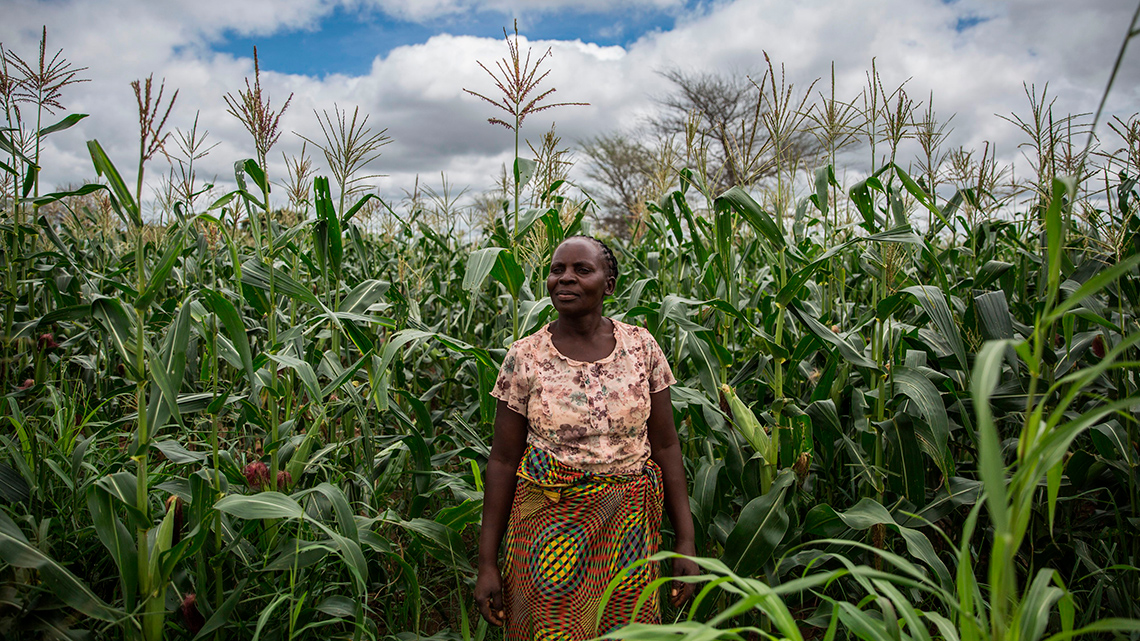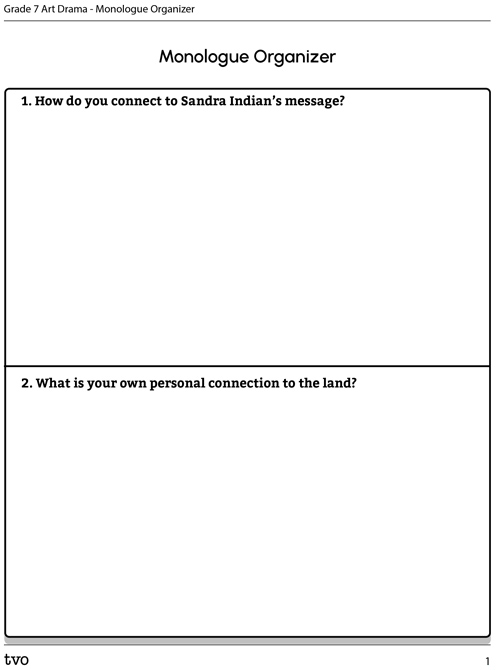Minds On
Warm up

Let’s begin with a deep breathing activity.
Don’t forget to do your safety check!
Warm Up
Breathing activity
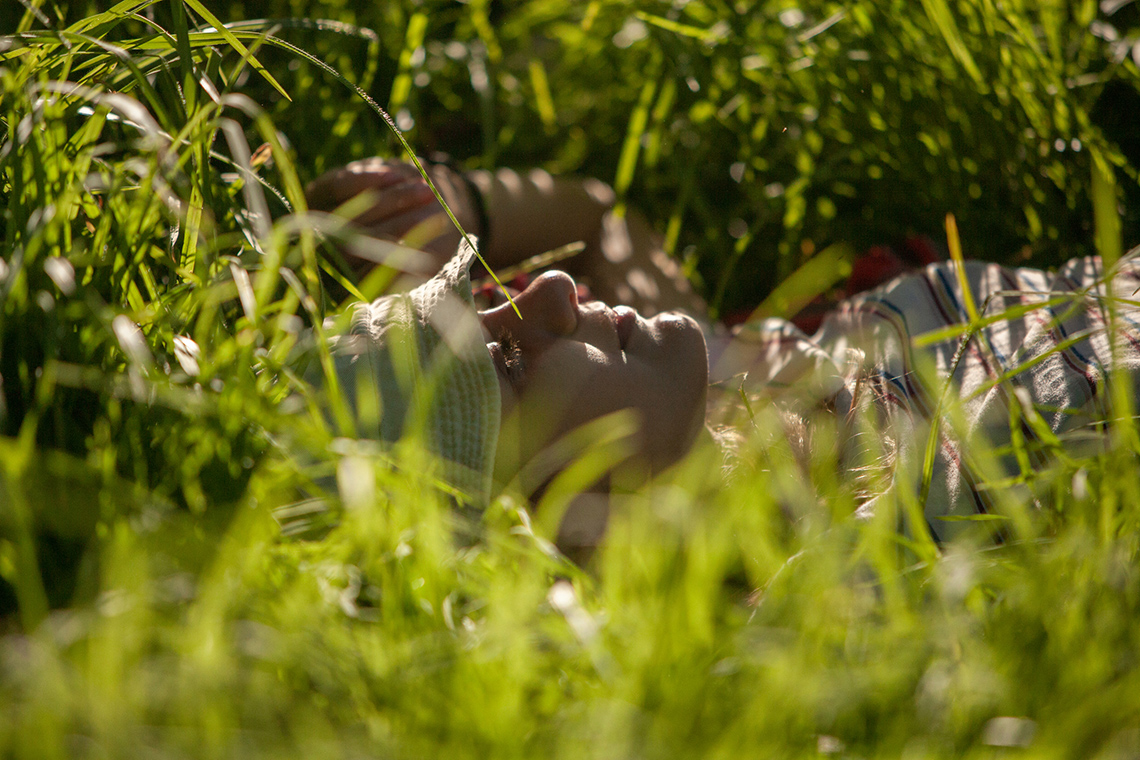
We are going to begin with a deep breathing activity.
Find a comfortable place to lie on your back with your legs stretched in front of you or sit in a comfortable spot. Place a small pillow or a soft object of your choice onto your stomach.
As you breathe deeply, you should feel the object rise and then fall as you breathe out.
Take a few more deep breaths.
Access the following audio recording “Deep Breathing Activity” to follow this exercise.
Deep Breathing Activity
Drama game
If possible, set a timer for 3 minutes. In those 3 minutes, record anything about yourself that is associated or has a connection with any of the following words given.
- pear
- a month
- hill
- a lake or river
- rowing
Press ‘Example’ to help you get started.
If the word ‘London’ was in the list, you could write, “I went to London last month.” Or “London is where I’d like to live one day.”
At the end of 3 minutes, stop recording. If possible, share your connection with a partner.
Let’s get started
Explore the following images and descriptions. As you explore, consider how these relate to the idea of a connection with the earth.
Student Success
Think-Pair-Share
What is your own connection to the world around you?
Would you say you have a relationship with the earth?
Record your thoughts and ideas using a method of your choice. Share with a partner, if possible.
Note to teachers: See your teacher guide for collaboration tools, ideas and suggestions.
Action
Get ready, get set…

Everyone has a worldview and their own perspective about issues that are based on their experiences and interactions in the world.
Press ‘Perspective’ to reveal what this word means.
Our perspective or point of view is partly shaped by our communities. When we connect to others both inside and outside of our own communities, we are listening and understanding their perspectives.
Brainstorm
Think about…

What can we learn when we explore multiple perspectives?
Record your ideas using a method of your choice.
Press ‘Let’s Check’ to access a possible answer.
Connecting to the land
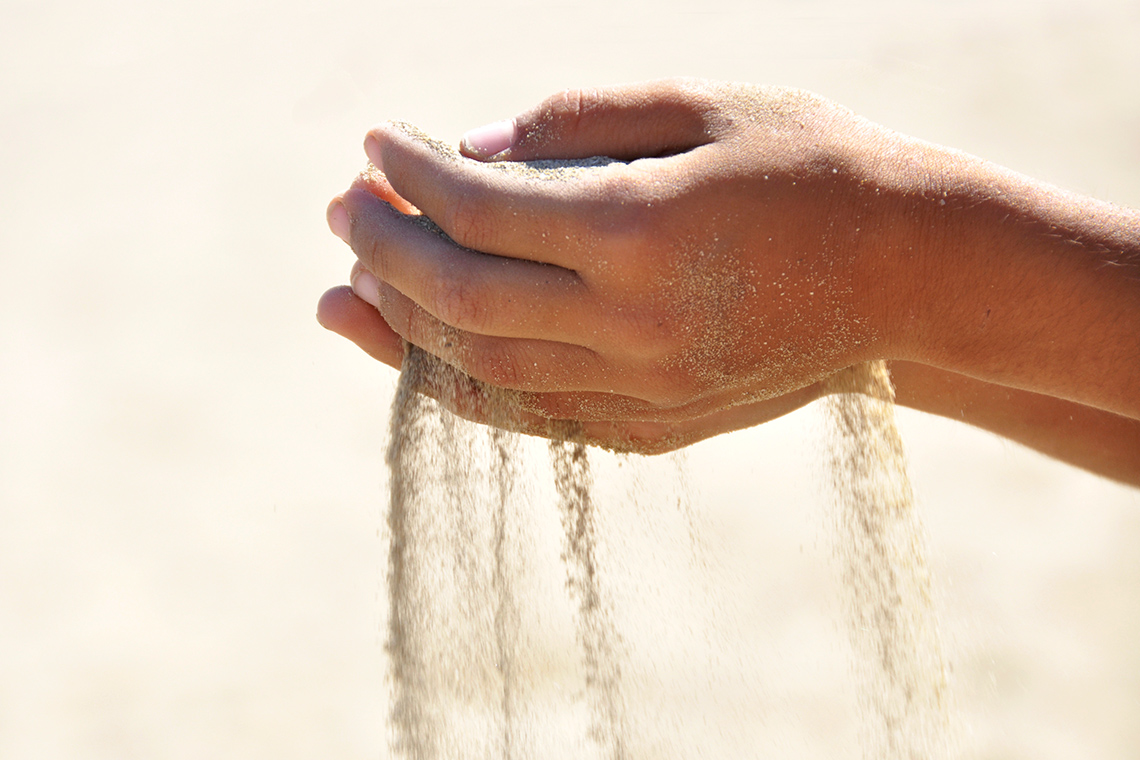
Our perspective about the land and how we connect to the land around us is often shaped by our community and how that community, as a culture, connects with the land.
Explore the following video of an interview with Sandra Indian from the Ojibways of Onigaming First Nation in Northwestern Ontario.
Respond to the following questions using a method of your choice.
- Sandra felt a connection to horses. What did she learn from this connection?
- What does the following mean? “We are all people of the land.”
Press ‘Let’s Check’ to access suggested answers.
Sandra felt a connection to horses. What did she learn from this connection?
Sandra feels horses do not have the ability to think about the future or the past. They live in the present. Hence, horses have taught her to fully live in the present moment.
What does the following mean? “We are all people of the land.”
According to Sandra, Elders used to say, “We are all people of the land.” This was meant to act as a reminder that humans should never forget they are interconnected with the land. In other words, humans need to seriously consider the effects of their decisions, habits, and behaviour have on the environment.
Indigenous worldviews offer a different perspective on the environment than Western values. Indigenous peoples and communities, like Sandra’s, consider the interconnectedness of all living things. Though each community is distinct, most if not all Indigenous worldviews believe that the land, the waters, the sun, the moon, the rocks, the hills, the mountains, the wind, the sky, and more all have a spirit and are living things. Within many Indigenous languages, the names for the rocks, the lands and the waters are described using animate (alive) language because of the spirit that lives within each.
Within Indigenous worldviews, it is understood that all of the elements in the universe are connected and are all dependent on one another for life. Humans are not superior to any other living. And as humans, we have a role and responsibility to take care of the Earth for not just this generation, but also future generations as well.
Pause and Reflect
Reflection questions
- Can the animals around us help us understand our own relationship with the earth? Why or why not?
- If animals could speak your language, what might they say about how we are treating the environment? What habit or behaviour might they want us to improve? Why?
- What are some roles and responsibilities you have to take care of the Earth?
Explore the following TVO video “Soaking in the Health Benefits of Forests.”
Think about the following questions as you explore.
- According to the video, what are the benefits of forest bathing?
- Why might you use a guide when forest bathing?
- Where and when did the practice of forest bathing originate?
Record your responses to the following questions using a method of your choice.
To review your answers, examine the following Review Questions Response Guide document.
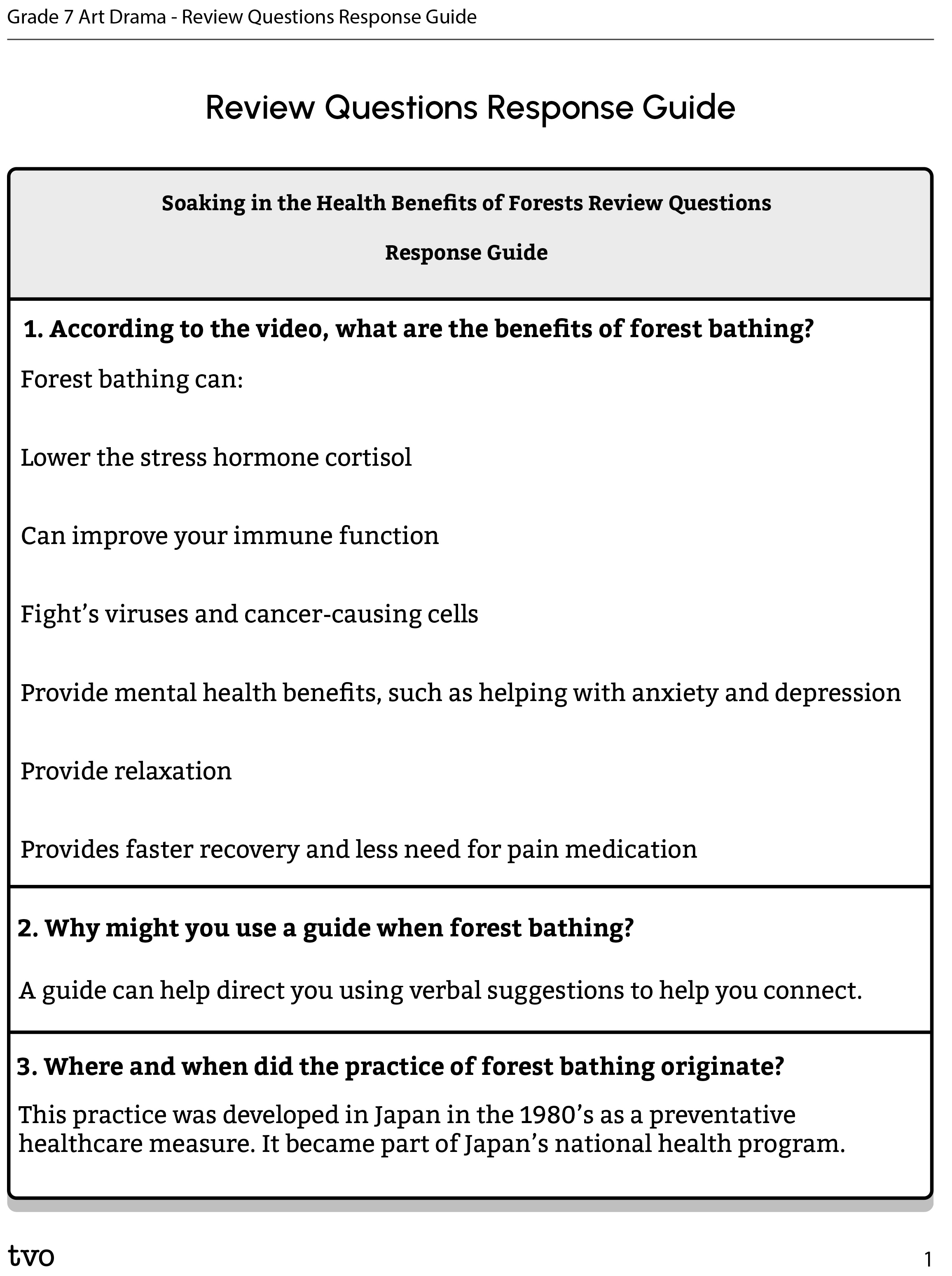
Press the Activity button to access the Review Questions Response Guide.
Activity (Open PDF in a new tab)Go!
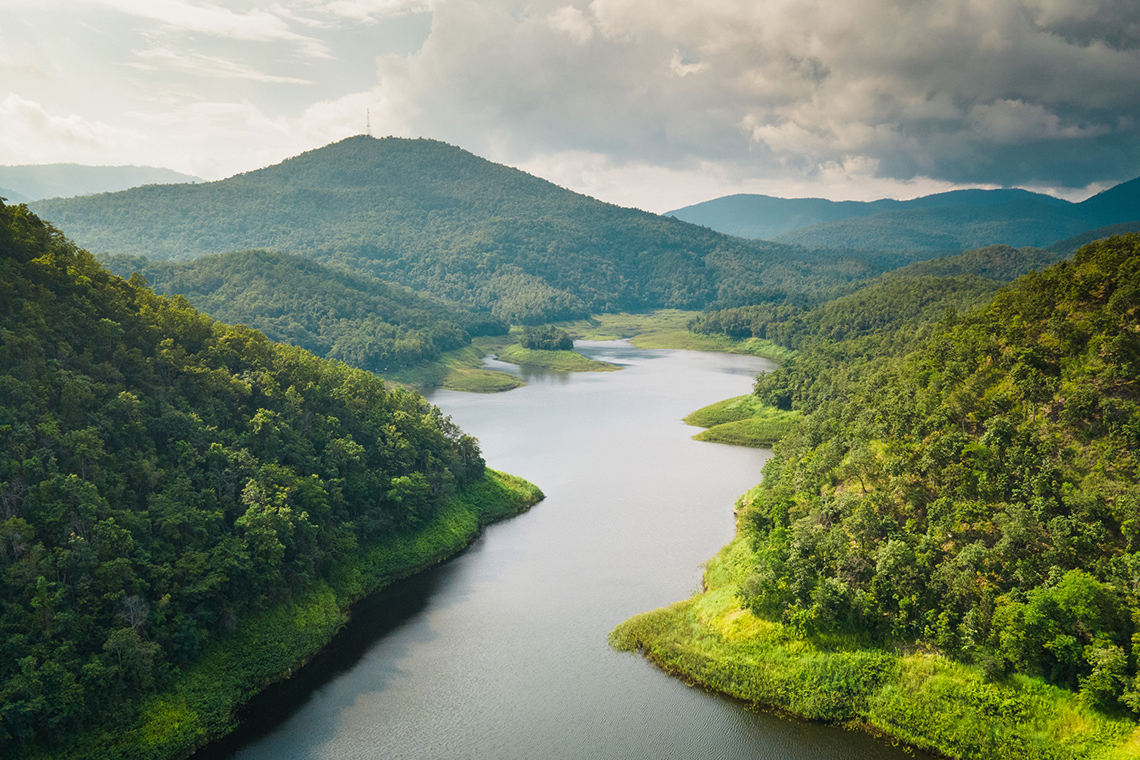
Task 1: Making connections
A tree in a forest is used for forest bathing and exploration. This tree lives in a forest and has experienced many people coming to enjoy the outdoors.
Develop five questions that a reporter could ask a tree in a forest about the benefits of being out in the forest.
When creating your questions, consider what is the tree’s relationship with other people, plants and animals in the forest?
Record your questions using a method of your choice.
Press ‘Hint’ to access a clue to help you get started.
Task 2: The monologue
Revisit Sandra Indian’s video about connection to the land.
Think about the following questions:
- How does Sandra Indian discuss their connection to the land?
- What are some of the ways you would like to connect to the land?
- How does your culture or community help you understand your relationship and roles and responsibilities to the land around you?
Press ‘Video’ to access “Connecting to the Land.”
Using drama to share feelings

The drama convention of a monologue brings an opportunity to share personal perspective and ideas about a topic of interest.
A monologue is long speech by one character in a drama, intended to provide insight into the character.
Explore this video entitled “What is a Monologue” to learn more about how actors use monologue to communicate their ideas and emotions to the audience.
Create a short script for a monologue about your own connection to the land. Consider the following ideas as you prepare your script:
- How do you connect to Sandra Indian’s message?
- How do you connect to the information learned about the health benefits of forests?
- What is your own personal connection to the land?
- Could your connection be stronger? How might that happen?
- How can you bring this information together to share insight about your connection to the land or potential connection to the land?
Press ‘Example’ to access a sample monologue.
Complete the Monologue Organizer in your notebook or using the following fillable and printable document. You can also use another method of your choice to record your thoughts.
Consider adding your work to your drama portfolio.
Pause and Reflect
Imagine if you…
Imagine if you had the opportunity to speak to Sandra and ask her five questions. What would you like to learn more about?
Record your questions in a method of your choice.
Consolidation
Putting it all together

In the Action section, you have explored two different videos and examined different perspectives about the land.
Choose one of these questions to explore. Record your response using a method of your choice.
Press the following tabs to access each question.
Brainstorm
Questions to consider
- How can spending time on the land help us to feel reconnected?
- What responsibilities must we bear to ensure that the land remains healthy? Name something you can do to take responsibility for the land.
Monologue: Personal response
Revisit the monologue that you created in the Action section.
Use these two questions to add more information to your monologue. You want to express your personal thoughts and opinions and also try to include how you feel about the topic of environmental awareness and connection.
If you were to perform your monologue, consider who your audience might be.
- How could you express yourself to appeal and capture the attention of that audience?
Portfolio
Journal reflection
Reflect on the learning tasks. This reflection is a space for you to express your feelings, ask questions about what you have just done, and connect thoughts together with specific activities or exercises.
Use 2-4 of the journal prompts from the Reflection Starters list and create a written, audio or video reflection.
|
Prompts to Start a Reflection on Drama Class Note: The following prompts begin an entire thought and can be used to develop your thoughts and ideas. Note: Try to utilize two-four of the prompts provided. If there is something else you wish to share, continue to build on your ideas. Note: Explore your thoughts and feelings with direct reference to what you learned and explored within the lesson. When I did (Blank), it reminded me of… I really want to know more about (Blank), because… I’m really happy about (Blank), because… If I were to sum up my experience in this lesson in one word it would be (Blank), because… I am excited to try(Blank), because… When I think about what I accomplished in this task, I think about… |
Press the ‘Activity’ button to access Reflection Starters.
Reflection
As you read the following descriptions, select the one that best describes your current understanding of the learning in this activity. Press the corresponding button once you have made your choice.
I feel…
Now, expand on your ideas by recording your thoughts using a voice recorder, speech-to-text, or writing tool.
When you review your notes on this learning activity later, reflect on whether you would select a different description based on your further review of the material in this learning activity.




